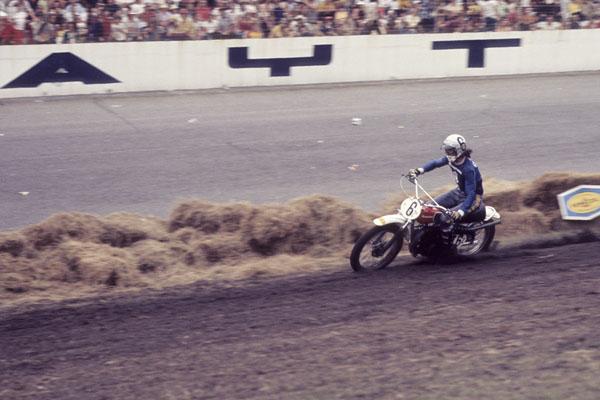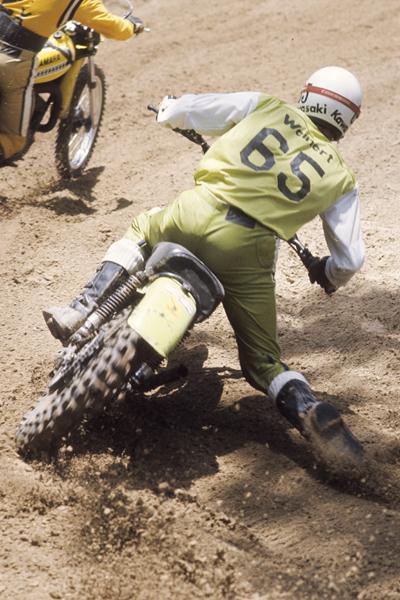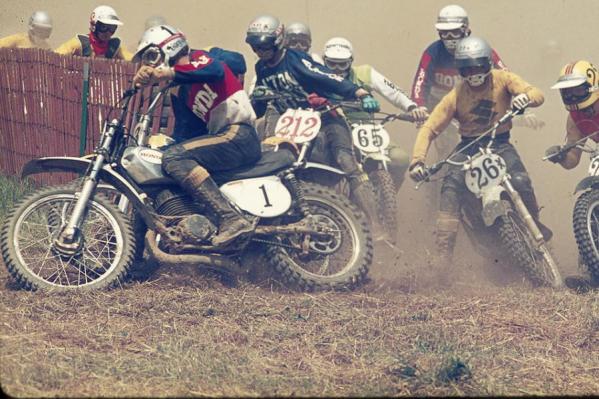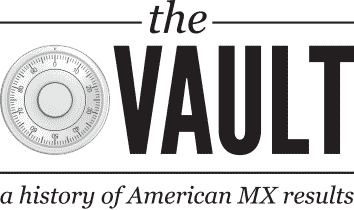The second year of the AMA Motocross Championships was a big step forward from the genesis of the tour. The motorcycle factories of Japan were realizing that the vast U.S. market offered a huge new group of buyers, as motocross in America was growing rapidly, spurred on in large part by the 1971 Bruce Brown film On Any Sunday. All four of the major Japanese brands—Honda, Kawasaki, Yamaha and Suzuki—had full factory efforts, with Honda coming on strong in '73 with the release of its Elsinore. (The first 250cc round was still won by a Sweden-made Husqvarna, ridden by Bob Grossi.)

The U.S. market was still taking shape, and the AMA Motocross tour was growing rapidly, especially in one area of the country. Check out the location of the first five rounds, as well as the last three: all in the Southeast. But that was in part because the bigger tracks out west—Saddleback, Livermore, Puyallup—were part of the still mighty Trans-AMA. The Southeast was also anchored by Bill West's popular Winter-Am tour, which was arguably bigger than the actual national tour until the late-seventies. As it turns out, only one of the tracks on the '73 schedule remained on the schedule today, as you will soon read.
It was in '73 that “The Jammer,” Jimmy Weinert, broke through the Europeans' stranglehold on the Trans-AMA tour with a win in the mud at Rio Bravo in Texas. But the biggest upset win came from Jim Pomeroy at the opening round of the 1973 FIM World Championships in Sabadell, Spain. Based on his results on the young AMA tour, Pomeroy had accepted a ride to race in the 250cc Grand Prix Series in Europe, which at the time was much more prestigious than the infant AMA tour. Defending AMA 500cc National Champion Brad Lackey had also decamped to Europe, but his first win would take more time in the big boys' class. (It should be mentioned that Lackey and Pomeroy followed globetrotters U.S. pioneers like Bud Ekins, Stu Peters, John DeSoto, Bill Silevrthorne, Billy Clements, Mark Blackwell and more across the Atlantic Ocean to learn from the Europeans, but they never had the success that would visit both Pomeroy and future 500c world champ Brad Lackey.)


Here is something a little extra. A YouTube video to a young Scott Wallenberg's Super 8mm footage from the 1973 Daytona event You can clearly see Gary Jones sporting the #1 plate on the AMA pro debut of the 250cc Elsinore. And Gary Bailey is wearing a helmet cam in practice on his Bultaco, while Karsmakers rides his yellow YZ. And Brad Lackey is also wearing his #1 plate and debuting the Kawasaki green color scheme in motocross.
Meanwhile, the Inter-Am series was starting to fade away, as it was down to five races in '73 and the title was won by Finland's Heikki Mikkola. But the biggest round—the Superbowl of Motocross at the Los Angeles Coliseum—was the biggest draw of all. That was a sign of things to come for the sport in general. And you might notice that the first AMA National on the '73 schedule took place at a place that's now regarded as the oldest AMA Supercross of all, at the venerable Daytona International Speedway. One year later, Daytona would be off the outdoor national schedule, but it would be part of a new deal called the AMA Yamaha Super Series…. The “Cross” was yet to come.
